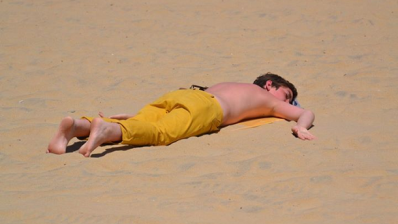New research delves into UV protection from herbal extracts
In a recently published article, entitled Herbal Sunscreens and Ultraviolet protectants, two leading American herbalists analyzed a number of herbal agents to assess the extent to which the systematic negative effects of ultraviolet light could be reduced when these herbal extracts are taken orally.
The research was conducted by Eric Yarnell, chief medical officer at Northwest Naturopathic Urology in Seattle Washington and Kathy Abascal, director of the Botanical Medicine Academy, Vashon, Washington, has been published in this month’s edition of the peer-reviewed journal, Alternative and Complementary Therapies.
The study looked at various scientific research properties that have looked into the UV and general sun protection properties of a host of herbal-based ingredients and extracts, in an attempt to make comparisons and draw conclusions over efficacy and future applications. This is thought to be one of the first times such a study has been conducted.
Golden serpent fern and green tea provide photoprotective properties
The research findings highlighted the fact that Phlebodium aureum (golden serpent fern), leucatomos, as well as what the researchers refer to as’ sufficiently high’ oral doses’of Camellia sinensis (green tea), provide photoprotective functions.
According to the study finding, golden serpent fern extract shows great promise for counteracting negative effects of UV exposure, helping to avoid sunburn, particularly in individuals who are sensitive sun.
Meanwhile, the research into green tea showed that a combination of topical and oral extracts helpied to maintain skin elasticity, while further showed that a beverage based on the substance lowered decreased skin damage and photoaging. A 2 - 3 percent dose of green tea was found to reduce UV-B-induced skin damage.
In addition, Redox modulators such as propolis and proanthocyanidins (from Pinus maritima or Vitis vinifera) have also been shown to have the ability topically to prevent sunburn and UV-related toxicities.
A 16 percent dose of propolis provides an SPF of 20
The study authors say they also discovered that a 16 percent concentration of propolis as a topical application had a sun-protection factor (SPF) of 20, and has proven to be an effective sun block when applied to mice.
“Natural sunscreens and systemic agents that reduce damage from UV light are of interest for preventing the discomfort or pain of sunburn, reducing photoaging of skin, and reducing the risk of various skin cancers or symptoms of photosensitivity conditions,“ the authors wrote in the article.
The researchers concluded that more research needs to be conducted in the area of natural and herbal sunscreens, while also confirming that the next stage of their research will be to publish an article about the herbal photosensitizers that enhance the theraputic properties of UV light.







